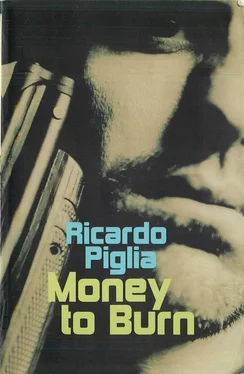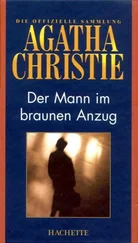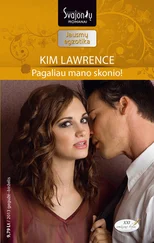Ricardo Piglia - Money to Burn
Здесь есть возможность читать онлайн «Ricardo Piglia - Money to Burn» весь текст электронной книги совершенно бесплатно (целиком полную версию без сокращений). В некоторых случаях можно слушать аудио, скачать через торрент в формате fb2 и присутствует краткое содержание. Год выпуска: 2004, Издательство: Granta UK, Жанр: Современная проза, на английском языке. Описание произведения, (предисловие) а так же отзывы посетителей доступны на портале библиотеки ЛибКат.
- Название:Money to Burn
- Автор:
- Издательство:Granta UK
- Жанр:
- Год:2004
- ISBN:нет данных
- Рейтинг книги:5 / 5. Голосов: 1
-
Избранное:Добавить в избранное
- Отзывы:
-
Ваша оценка:
- 100
- 1
- 2
- 3
- 4
- 5
Money to Burn: краткое содержание, описание и аннотация
Предлагаем к чтению аннотацию, описание, краткое содержание или предисловие (зависит от того, что написал сам автор книги «Money to Burn»). Если вы не нашли необходимую информацию о книге — напишите в комментариях, мы постараемся отыскать её.
Money to Burn — читать онлайн бесплатно полную книгу (весь текст) целиком
Ниже представлен текст книги, разбитый по страницам. Система сохранения места последней прочитанной страницы, позволяет с удобством читать онлайн бесплатно книгу «Money to Burn», без необходимости каждый раз заново искать на чём Вы остановились. Поставьте закладку, и сможете в любой момент перейти на страницу, на которой закончили чтение.
Интервал:
Закладка:
Epilogue
This novel tells a true story. It involves a minor case, already forgotten among police chronicles, which for me none the less, the more I investigated it, acquired the aura and pathos of a legend. The facts occurred in two capital cities (Buenos Aires and Montevideo) between 27 September and 6 November 1965. I have respected the continuity of the action and (wherever possible) the language of the protagonists and the witnesses of this history. Its dialogues and opinions do not in all instances correspond to the precise localities where they were first expressed, but I have always used original material in the account of the words and actions of its characters.
Throughout the book I have attempted to maintain the stylistic register and 'metaphorical gesture' (as Brecht called it) of the social reports whose theme remains illegal violence.
The mass of material documentation has been deployed as dictated by the plot, meaning that whenever I have been unable to confirm the facts with direct sources, I have opted to omit that particular version. This explains why the great unknown of the book (its 'fantastical instant') has to be the mysterious disappearance of Enrique Mario Malito, the gang's leader. Nobody really knows what happened to him in the hours following the siege. Numerous hypotheses exist regarding his fate but I have chosen to respect the intrigue woven by the story's protagonists.
Some say he split from the gang at the moment when they were surprised changing the plates on the Studebaker and that he travelled in the Hillman to get away from Marmajará Street ahead of the confrontation with the police. He had a rendezvous arranged with Brignone for the next day, but the succession of captures and the siege of the block of flats cut their connection. The most plausible account assures us that, despite being isolated and without contacts, he managed to escape and cross to Buenos Aires and that he died in a shootout in Floresta in 1969. The most extravagant version recounts that he managed to flee over the rooftops just as the police arrived, and that he hid himself in a water tank where he remained alive for two days until he could escape to Paraguay where he lived in Asuncion until his death (from cancer) in 1982 under an assumed name (that of Anlbal Stocker, according to some sources).
For his part, the Gaucho Dorda recovered from his wounds and was extradited to Buenos Aires where he died the following year, assassinated during a revolt that took place in Caseros jail (it would appear to have been initiated by a police infiltrator). During his stay in hospital and in prison (in Uruguay) in January and February of 1966, he was interviewed by the employee of the daily El Mundo from Buenos Aires, which published some of Dorda's statements in features published on 14 and 15 March 1966. In addition, I obtained access to the transcripts of Dorda's interrogation, which reside in the annals of the case and the psychiatric reports of Dr Amadeo Bunge. I owe a further debt of gratitude to my friend Dr Aníbal Reynal, a judge of the primary courts, for granting me permission to consult and index this mass of material. The assistance of the judge of Assizes of the 12th District of Montevideo, Dr Nelson Sassia, was of immense value, for he allowed me to work with the statements of witnesses and the clerks to the court used in the case. It was here I came across the testimonial accounts offered by Margarita Taibo, Nando Heguilein and Yamandú Raymond Acevedo, among others of those involved. In Buenos Aires, the lawyer Raúl Anaya permitted me to consult records of the interrogations of Bianca Galeano, Fontán Reyes, Carlos Nino and others implicated in the case. I also obtained access to the declarations of Police Commissioner Cayetano Silva in his internal summary when he was obliged to bring a defence in an internal inquiry mounted by the police on grounds of his presumed complicity (an investigation that reached no final conclusion on the matter).
The remaining significant source for this book was the transcript of the secret recordings made by the police department on Herrera and Obes Streets, to which I obtained access thanks to an order of Dr Sassia, who facilitated my work with this confidential material. In November 1965 the Montevideo newspaper Marcha published a lengthy interview done by journalist Carlos M. Gutiérrez with the Uruguayan radio operator Roque Pérez, responsible for the technical control of all the recordings made in the apartment block at the time.
Naturally, I also went to the archives of all the newspapers published during that period. In Buenos Aires there were the Crónica, Clarín, La Nación and La Razón de Buenos Aires; in Montevideo, El Dia, Acción, El Pais and Debate. Of particular usefulness were the accounts and additional notes signed simply E.R., who covered the assault and served as the Argentine paper El Mundo's special reporter on the spot. I have freely reproduced from these accounts, without which it would have been impossible to obtain an exact reconstruction of the facts narrated in this book.
Thanks to the generosity of my friend the sculptor Carlos Boccardo, who lived in Montevideo throughout the events described on the corner of Herrera and Obes Streets, I was able to orchestrate the different versions of this same story from a variety of descriptions and evidence.
My first link to the story as related in this book (as always happens in every non-fictional account) occurred by chance. One afternoon, at the end of March or beginning of April 1966, I took a train en route to Bolivia. There I met Bianca Galeano, called by the newspapers 'the concubine' of the gunman Mereles ('the Crow'). She was sixteen years old but looked like a woman of thirty, and was in the process of fleeing the authorities. She told me an extraordinary tale which I half-believed, tailoring it to elicit (as indeed it did) a quantity of meals taken in the train's buffet car. During the long hours of the journey, which lasted over two days, she told me that she had just been released from jail; that she had been held a prisoner for six months for associating with a gang of thieves who had robbed the San Fernando Bank; and that she was going into exile to live in the Bolivian capital of La Paz. She gave me a first, muddled version of the deeds I vaguely recalled having read in the dailies some months earlier.
The girl spoke of a gangster who had taught her about the other side of life, and who had since died, brought down after having resisted like a hero for fifteen hours, and sparked in me the initial interest in her story. 'There were around three hundred cops, and they held out surrounded by the lot of them, but nobody could smoke them out of their lair,' the girl said in a vocabulary that sounded hostile, like words angrily used to describe a defeat that should have ended in victory. The kid had given up attending secondary school, become a cocaine junkie (as I could confirm after only a short time travelling together), though she described herself as the daughter of a judge, and swore that the Crow had left her pregnant. She spoke to me about the Twins, Kid Brignone and Gaucho Dorda, and about Malito and Twisty Bazán, and I listened to her as if brought face to face with the Argentine version of a Greek tragedy. The heroes were determined to confront and resist the insurmountable, and chose death as their destiny.
I got out in San Salvador, in Jujuy province, because I wanted to reach Yavi for the Holy Week processions. The train stopped for half an hour for the railway gauges to be changed. She got out with me, and we bade one another farewell at the zinc counter of a bar alongside the platform, where we drank a Brazilian beer together. I recall taking notes of what she told me both on the train and at the station, then again when I reached the hotel (for in those days I still considered that a writer had to go everywhere with his journalist's notepad). Then a while later (in 1968 or '69) I started properly researching the story, and wrote a first draft of this book.
Читать дальшеИнтервал:
Закладка:
Похожие книги на «Money to Burn»
Представляем Вашему вниманию похожие книги на «Money to Burn» списком для выбора. Мы отобрали схожую по названию и смыслу литературу в надежде предоставить читателям больше вариантов отыскать новые, интересные, ещё непрочитанные произведения.
Обсуждение, отзывы о книге «Money to Burn» и просто собственные мнения читателей. Оставьте ваши комментарии, напишите, что Вы думаете о произведении, его смысле или главных героях. Укажите что конкретно понравилось, а что нет, и почему Вы так считаете.












